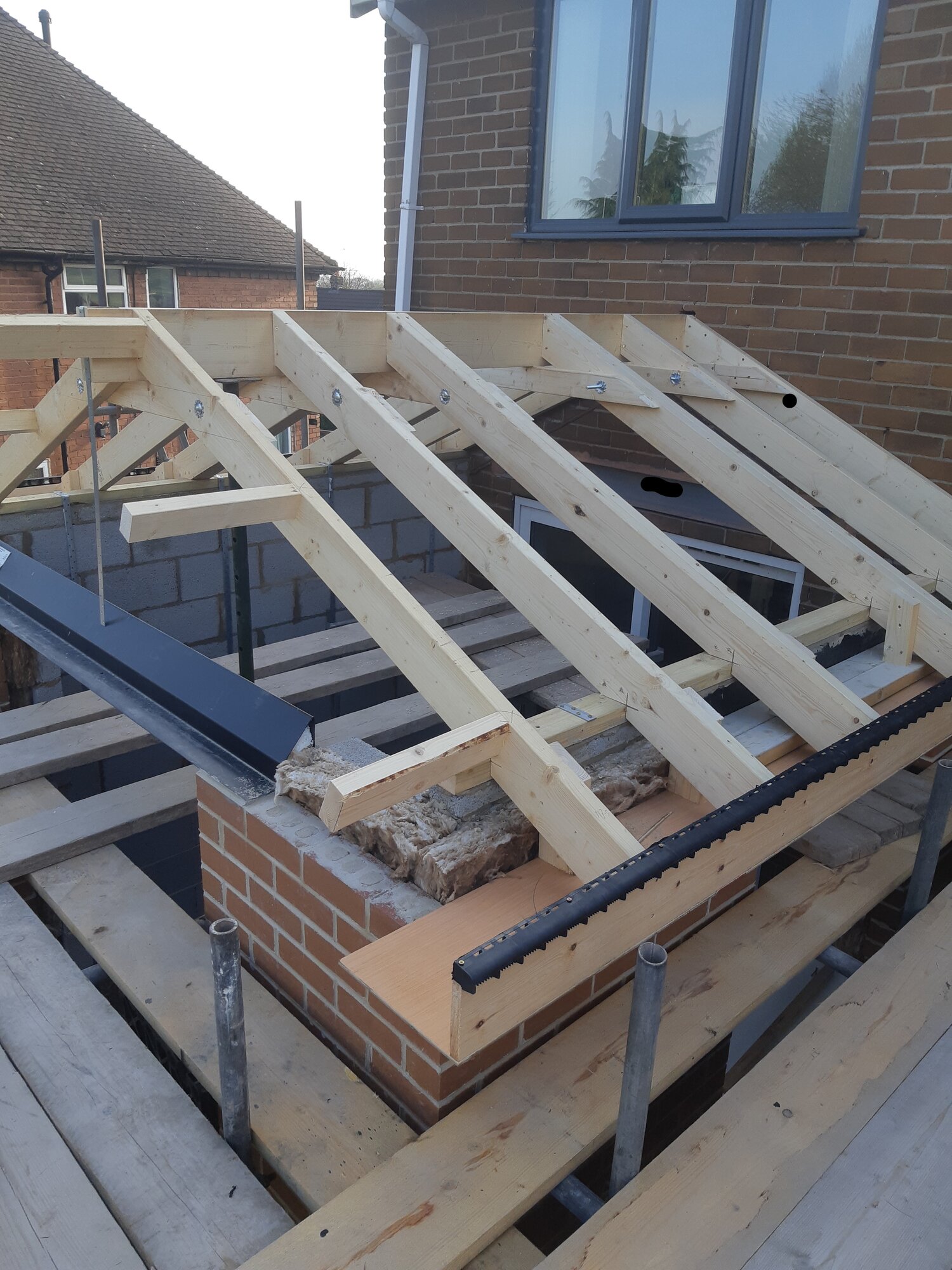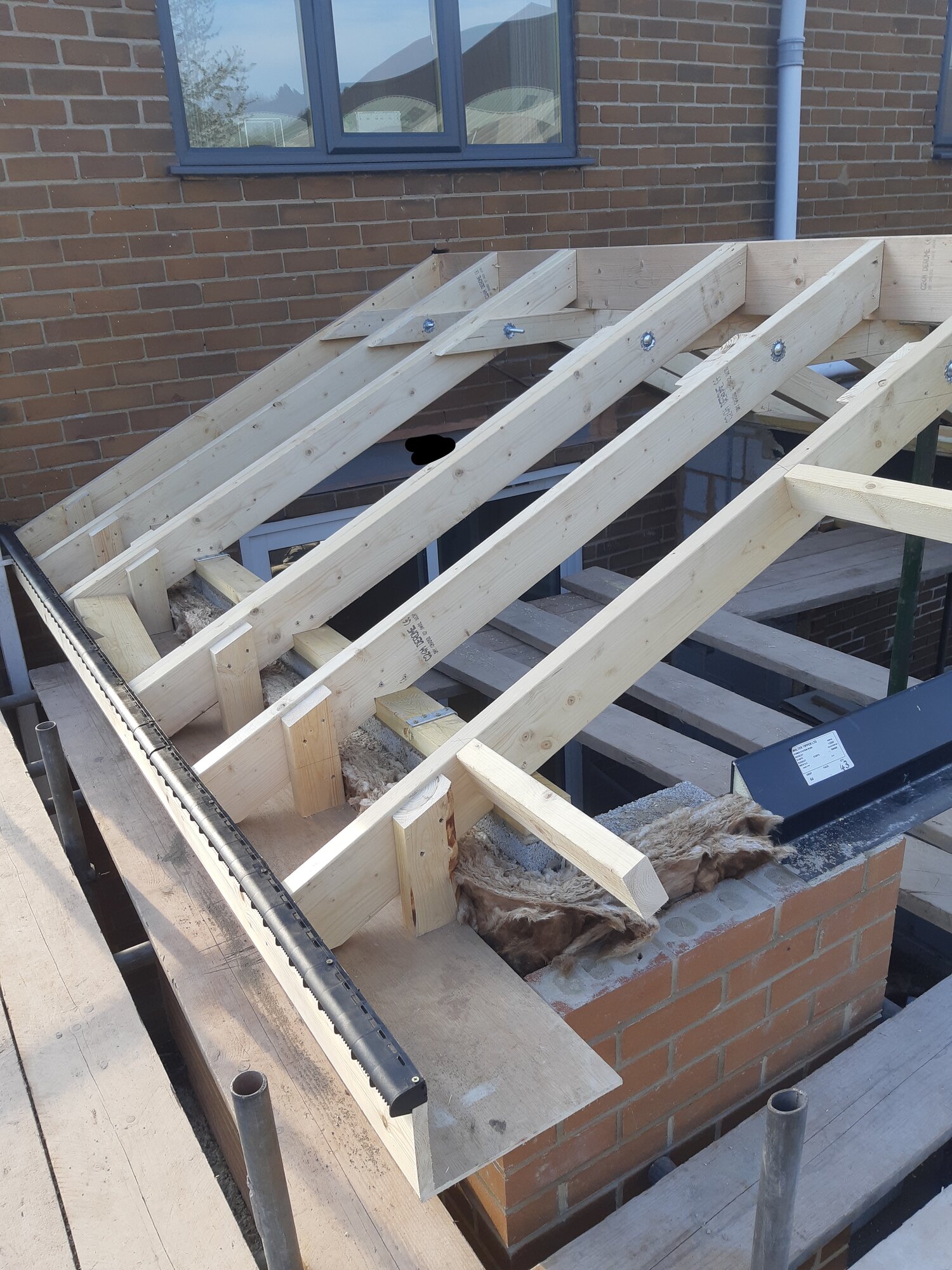- Joined
- 12 Jan 2025
- Messages
- 10
- Reaction score
- 0
- Country

I wondered if anyone can help me!
I recently moved into a 1900’s ish house which was really cold. I went in the attic and found minimal insulation, this was also picked up on the survey. So I set about adding another 200mm. I made sure I didn’t pack it too close to the eaves. Although there’s only a ventilation gap on one side which is about an inch and runs the full width of the roof. The other side the roof meets the wall and there’s no gap at all. I went into the loft the other day to check things were okay up there and was greeted with quite a lot of condensation on the what I think is breathable membrane and rafters. It’s not yet dripping onto the insulation. Now I can’t be sure whether this has coincided with this super cold weather or if it was there beforehand. The side with the ventilation and that gets the most sun seems to be completely dry. The side affected has the bathroom underneath which has spotlights with the fire resisting plastic things over and I have made sure these are pushed into place as tightly as I can get them. The other room under the affected part is an unused bedroom. I have added some foil insulation to the loft hatch and I have ordered a storm guard seal to add to it also.
I’ve read thread after thread about condensation in lofts and I’m not sure if I should hold fire with adding more ventilation into the weather warms up to see if things improve or if I should go ahead and add some regardless.
From my research the lap vents are pointless if you have a breathable membrane? I can’t add ventilation at the eaves on the other side, so am I left with the option of adding roof tile ventilation?
Sorry for the long winded message, I’m just losing my mind with what I should or shouldn’t be doing and want to avoid escalation of the problem. Any help would be massively appreciated!
I recently moved into a 1900’s ish house which was really cold. I went in the attic and found minimal insulation, this was also picked up on the survey. So I set about adding another 200mm. I made sure I didn’t pack it too close to the eaves. Although there’s only a ventilation gap on one side which is about an inch and runs the full width of the roof. The other side the roof meets the wall and there’s no gap at all. I went into the loft the other day to check things were okay up there and was greeted with quite a lot of condensation on the what I think is breathable membrane and rafters. It’s not yet dripping onto the insulation. Now I can’t be sure whether this has coincided with this super cold weather or if it was there beforehand. The side with the ventilation and that gets the most sun seems to be completely dry. The side affected has the bathroom underneath which has spotlights with the fire resisting plastic things over and I have made sure these are pushed into place as tightly as I can get them. The other room under the affected part is an unused bedroom. I have added some foil insulation to the loft hatch and I have ordered a storm guard seal to add to it also.
I’ve read thread after thread about condensation in lofts and I’m not sure if I should hold fire with adding more ventilation into the weather warms up to see if things improve or if I should go ahead and add some regardless.
From my research the lap vents are pointless if you have a breathable membrane? I can’t add ventilation at the eaves on the other side, so am I left with the option of adding roof tile ventilation?
Sorry for the long winded message, I’m just losing my mind with what I should or shouldn’t be doing and want to avoid escalation of the problem. Any help would be massively appreciated!




